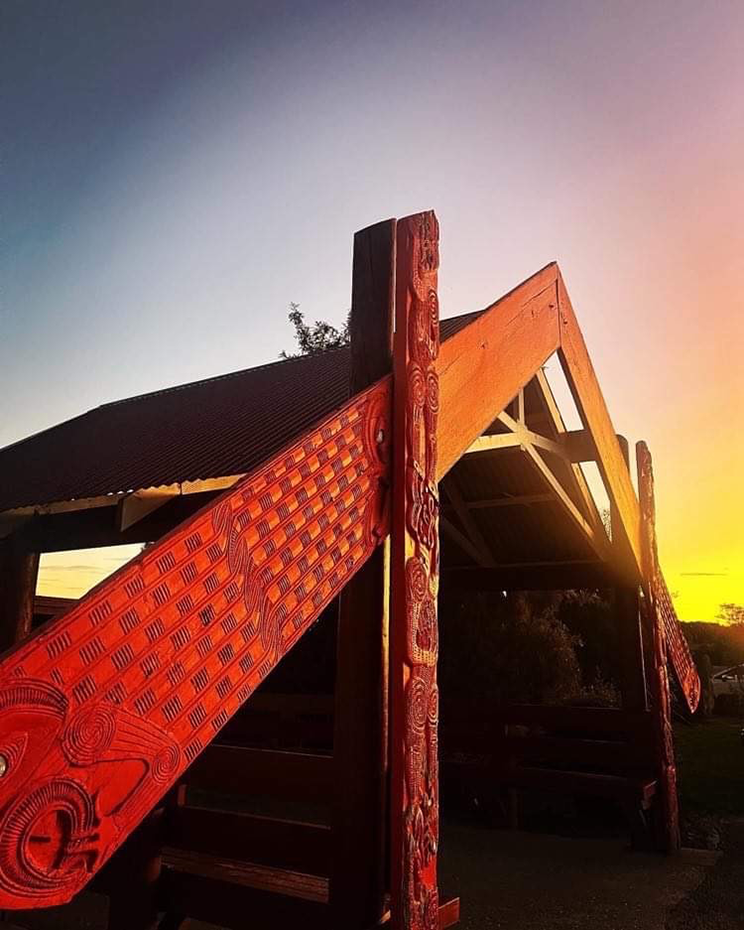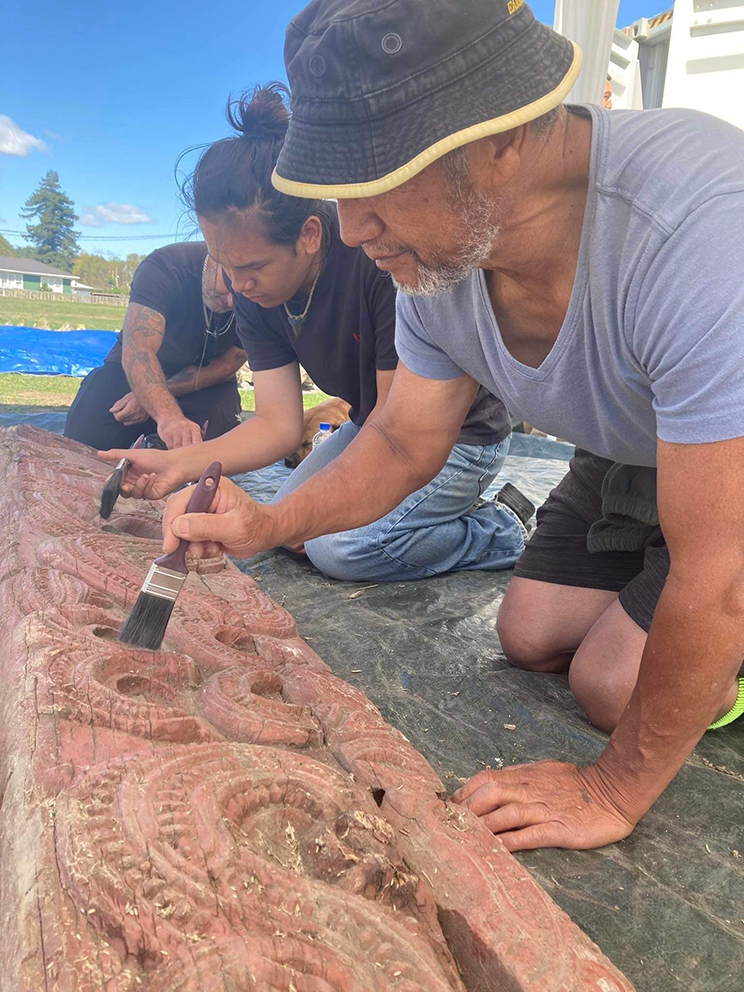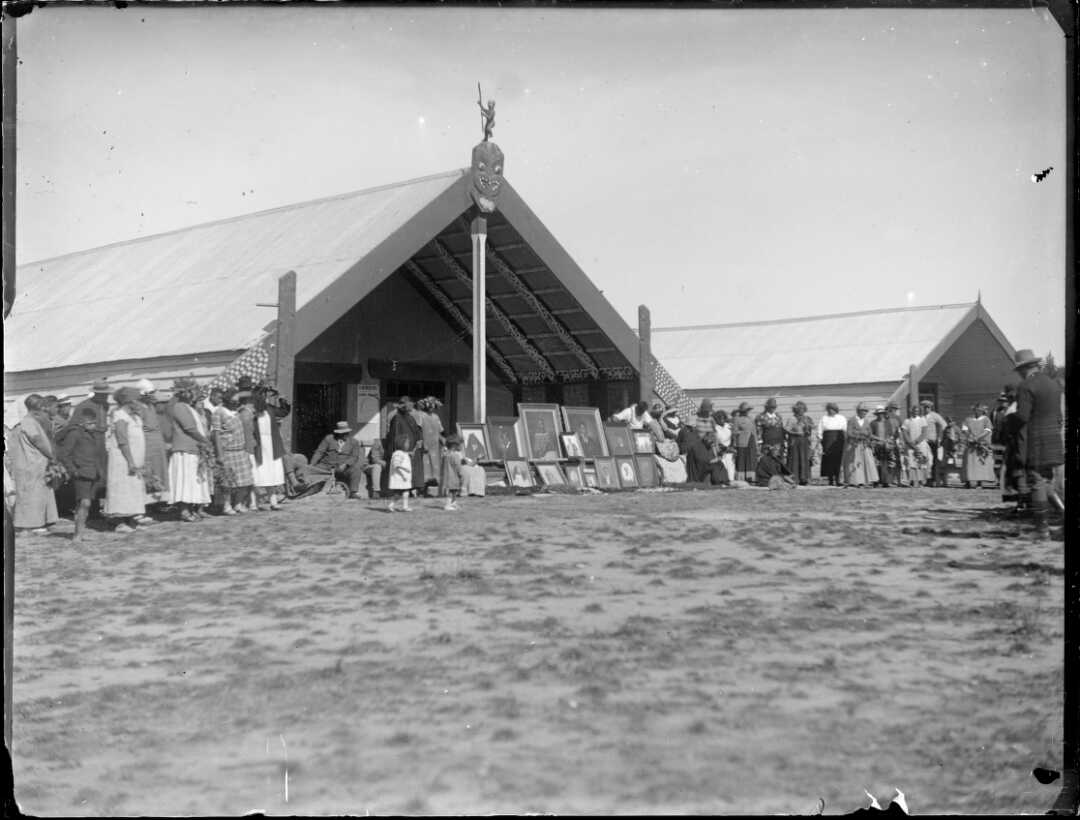Kahungunu ringa hora — Cyclone Gabrielle relief
Clare Butler, Digitisation Advisor Māori, reflects on being involved in a post-Cyclone Gabrielle flood relief kaupapa at Omahu marae, Hawkes Bay.
Whakatauki
Tākina te ngiha o te ahi o te whanaungatanga, kia mura, kia kakā
Let the fire of our kinship ties, burn and glow brightly
Watching from a distance
When Cyclone Gabrielle hit I remember the feeling of shock and despair. Watching footage of the riverbanks of the Ngaruroro breaking and flooding Omahu was an unbelievably sad sight. With no warning the people had to evacuate their homes, they were so brave as they made it to safety, leaving behind everything to be swamped with water. I watched the footage on the news feeling so scared for our whānau who lived there, ka heke roimata.
The following weeks I watched from a distance as the hapū collective of Ngā Piringa Hapū of Ngāti Hinemanu, Ngāi Te Upokoiri, Ngāti Honomokai and Ngāti Mahuika mobilised and came together. Weeks passed and the hapū maintained their vigilance, finding solutions, adapting, and making things happen on the ground as they responded to multiple priority issues.
People left their jobs to be available to help on the marae despite losing their own homes. The marae became a central hub to the whole of the surrounding communities, their ability to still manaaki despite the given circumstances was exceptional. A spirit of unity was felt in the passing shadow of Cyclone Gabrielle.
Supporting Ngā Piringa hapū
Kahungunu ‘He tangata ahuwhenua mōhio ki te haere i ngā mahi o uta me te tai’ Kahungunu was an industrious man, one who knew how to manage work both on land and at sea. This ability to manaaki and care for people is a trait that Ngāti Kahungunu is renowned for, Kahungunu ringa hora | The outstretched hands of Kahungunu.
Six weeks after Cyclone Gabrielle hit Hawkes Bay, a roopu made up of multiple agencies involved in the taonga sector headed to Omahu marae to support the Ngā Piringa hapū. I wanted to be involved in this kaupapa as Omahu and the people from there have a special place in my heart. This was an opportunity to stretch out our hands to Kahungunu and be ringa hora to support them.

Tomokanga showing details of carvings from a whare tipuna that previously stood at Omahu Marae, Hastings, Hawkes Bay. Photo by Jamie Metzger.
Two kaupapa
The roopu was made up of kaimahi from Pouhere Taonga Heritage New Zealand, Te Papa Tongarewa, Otago University and The National Library Te Puna Mātauranga o Aotearoa. The Te Papa team were very early on the ground and had previously visited Omahu to support the community. For me it was my first time returning back to Hawkes Bay since the cyclone.
The roopu came together to support the hapū with two kaupapa, the recovery of tupuna kōiwi that had resurfaced from an ancient urupā and the recovery of tupuna carvings housed in a flood affected shed. I choose to work with the taonga.
Working with pou whakairo
Our days started and ended with karakia lead by our whānau from Omahu. The first day was spent working with pou whakairo which came from a pātaka carved by Ngāti Porou carvers in 1860. The pātaka originally stood on the marae grounds at Omahu and was dismantled under the cloak of Ringatu karakia in 1937. A small crew cleaned, rehoused and documented the taonga. The taonga were in immaculate conditions considering their age and their recent experiences.
Gentle cleaning of taonga
The second day more taonga arrived by trailer. We were eager to see the taonga that were being unloaded. We started by laying them out and giving them a light brush down to remove the big clumps of silt which had hardened onto them. Gently we worked, making sure we did not damage the kōwhaiwhai patterns and the mātauranga which had begun to reveal itself from beneath the grey silt.
In total, there were 150 taonga and individual parts from three possibly four different building structures back in hapū hands. Day three saw another two trailer loads of taonga come back to the marae. We were all astounded at the volume of taonga that had been returned, we were totally humbled to be in their presence.
The importance of our taonga
Whilst at Omahu our small team worked from under a marquee close to the marae, where whānau came to talk and lend a hand to brush. People came to watch and pay witness to the beautiful taonga that had come back into the collective memory.
A personal highlight was observing how whānau interacted with the taonga. Tears were shed as reconnections were made. Moments of laughter and moments of quietness were held as we all carefully went about our mahi. I managed to capture a photo of a magic moment when I noticed my nephew and his koro working side by side cleaning the carvings.

Koro and mokopuna: Piripi Hanara and Hawaiki Morehu Vincent King gently cleaning the paepae carvings at Omahu Marae, May 2023. Ngā mihi ki te whānau Hanara.
To my delight, one whānau member searched the National Libraries Catalogues and found an image of the whare tipuna and the koruru that we were all admiring. In that moment seeing that image helped reference and weave kōrero and memories together again.
Gathering in front of meeting houses, Omahu Marae, with portraits and photos of family members, Fernhill, Hastings, Hawke's Bay District, by Henry Whitehead, Ref: 1/4-027805-G. Henry Whitehead Collection, Alexander Turnbull Library, Wellington, New Zealand.

For myself strengthening the whakawhanaungatanga connections are what made this experience extra special. The hapū was so generous in sharing tupuna kōrero and their future aspirations of where they would like their whare taonga to stand and house all of the recovered taonga.
I roto I te pōuri te marama e whiti ana.
In darkness there is light. From a disastrous event an opportunity has arisen to claim new beginnings.
Tēnei te reo mihi ki a koutou e ngā uri o Omahu, kia maia, kia manawanui, kia manawaroa.
Resources for helping preserve taonga
Find out what you can do to preserve your precious items and how we can help.
Resources for marae affected by natural disaster — A list of practical information to help you care for items during the recovery stage of a disaster.
Disaster recovery — Information about how to plan for and respond to disasters.
Caring for collections guides — Find out how you can care for your collections at home and on the marae.
National Preservation Office — Contact us for advice about how to protect your collections from damage caused by natural disasters.